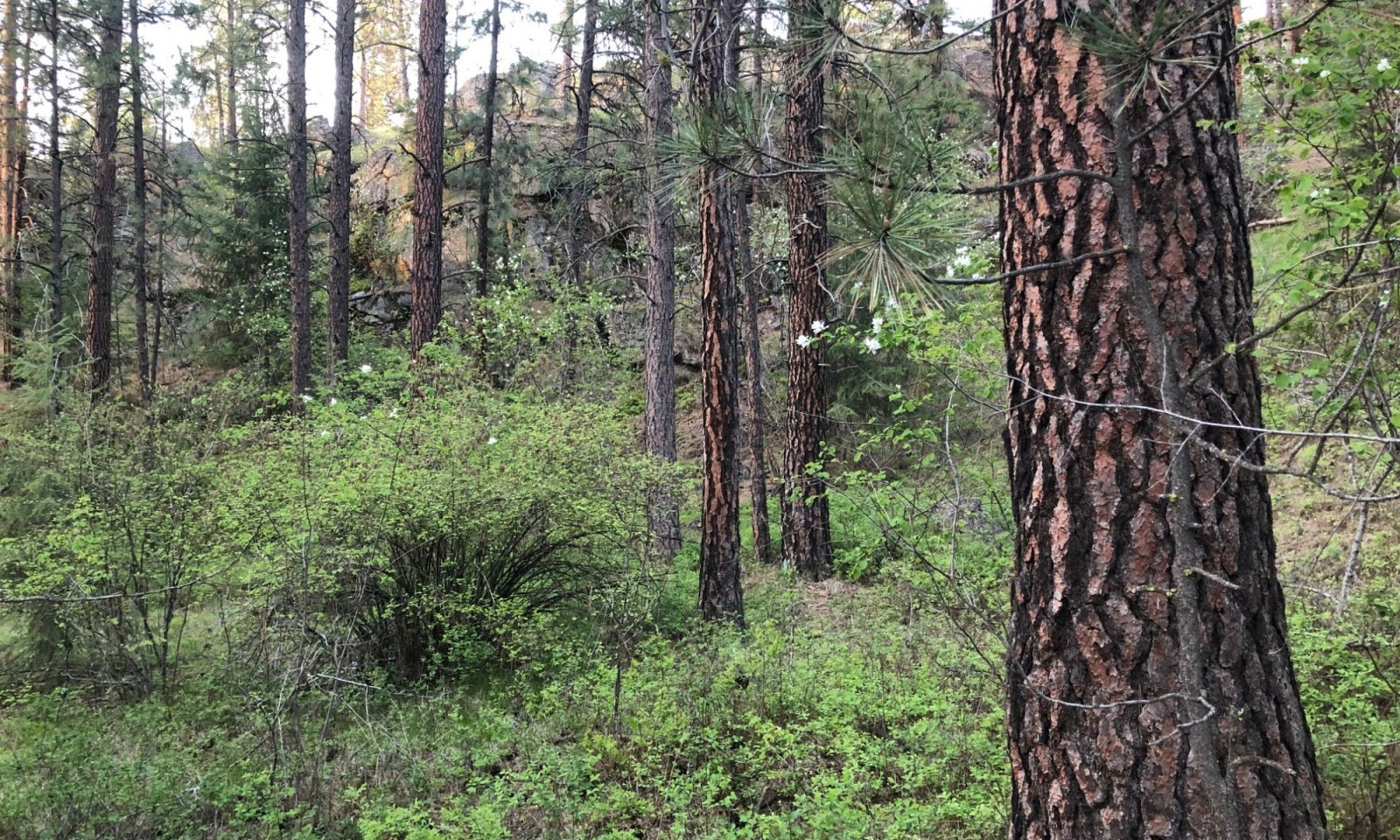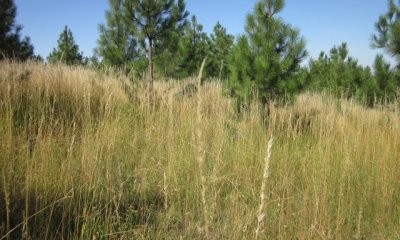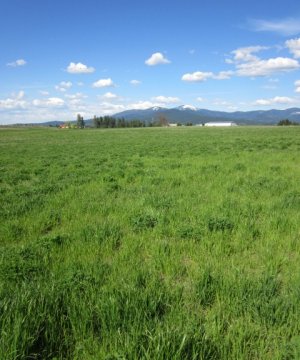
Mesic, Xeric, Unglaciated Hills and Canyons, Low Available Water (Ponderosa pine/Shrub) Ponderosa pine/common snowberry-ninebark
Scenario model
Current ecosystem state
Select a state
Management practices/drivers
Select a transition or restoration pathway
- Transition T1A More details
- Transition T1B More details
- Restoration pathway R2A More details
-
No transition or restoration pathway between the selected states has been described
Target ecosystem state
Select a state
Description
This state is relatively stable with long fire intervals maintaining a mature stand of ponderosa pine over a host of shrubs. Pine regeneration after any type of disturbance creating understory gaps will be variable due to shrub competition. Western pine beetle kill and windfall will create snags and down wood.
Characteristics and indicators
Mature pine stand with canopy coverage from 40 – 60% allowing dense understory coverage of shrubs with snowberry the most abundant and ninebark on moister sites. Little or no pine regeneration present due to shrub competition. Fire return intervals could be 100+ years. With minimal disturbance this phase maintained for long periods.
Submodel
Description
This state developed from past overgrazing or other disturbance and where Kentucky bluegrass and/or Canada bluegrass invaded from adjacent areas. Shrub coverage is low. A mature stand of pine usually exists.
Submodel
Description
Much of this Ecological Site is located at lower elevations where humans (Native and European) settled. These areas were converted to homesteads, pastures, and cropland. In recent times urban expansion has converted these sites to housing developments, shopping malls, and/or business centers.
Mechanism
Invasion of introduce cool season grasses from overgrazing or seeding.
Mechanism
Land converted to crop, pasture or urban land
Model keys
Briefcase
Add ecological sites and Major Land Resource Areas to your briefcase by clicking on the briefcase (![]() ) icon wherever it occurs. Drag and drop items to reorder. Cookies are used to store briefcase items between browsing sessions. Because of this, the number of items that can be added to your briefcase is limited, and briefcase items added on one device and browser cannot be accessed from another device or browser. Users who do not wish to place cookies on their devices should not use the briefcase tool. Briefcase cookies serve no other purpose than described here and are deleted whenever browsing history is cleared.
) icon wherever it occurs. Drag and drop items to reorder. Cookies are used to store briefcase items between browsing sessions. Because of this, the number of items that can be added to your briefcase is limited, and briefcase items added on one device and browser cannot be accessed from another device or browser. Users who do not wish to place cookies on their devices should not use the briefcase tool. Briefcase cookies serve no other purpose than described here and are deleted whenever browsing history is cleared.
Ecological sites
Major Land Resource Areas
The Ecosystem Dynamics Interpretive Tool is an information system framework developed by the USDA-ARS Jornada Experimental Range, USDA Natural Resources Conservation Service, and New Mexico State University.




